Perhaps you recall from a previous post that I intend to establish a bluebird nesting box trail along some of the trails on our property. Since that posting, I have made substantial progress in my commitment to build 100 bluebird nesting boxes. As you can see from the photograph above, I have completed 25 of the boxes. You can also see that the boxes take up a good deal of room in the shop, which is why I decided to build the boxes 25 at a time.
In all crafts, the rule of thumb is to measure twice, and cut once, thus avoiding errors and material wastage.  In the design of the nesting box that I am using, there are 30 specific measurements that are required in order to build the box. The measure twice rule thus makes 60 measurements per box.   Since I am building 100 boxes, a total of 6000 accurate measurements are required. UNLESS…..
UNLESS I were to spend a little bit of time up front to build an accurate set of templates and jigs for this project, which is what you see in the photograph above. After the initial templates are built, the tape measures and rulers can be put aside, and the parts for the 100 bluebird nesting boxes can be build with complete accuracy and no wastage.
By providing holes in the templates where all the screw pilot holes need to be located, it is a simple matter to use an awl (shown above) to mark accurate drilling locations for each hole.
Besides cutting and drilling templates, I made and labeled a complete set of jigs and stop blocks to use on the table saw, one of which is shown in the photograph above. Now, without any measuring at all, I can easily set up the machine to make the accurate and uniform cuts I need for this project.
Building the nesting boxes in batches allows me to produce all the parts I require for the project with a minimum of machine set up time. For example, in the photograph above you can see that I am using a 1 1/2″ diameter hole saw to cut the entry hole for the nesting box. Using this hole saw requires the drill press to be set to a slower speed than for the other drilling on the boxes. Instead of changing the machine speed (which involves realigning two drive belts) repeatedly for each nesting box, I can simply set the machine up once and drill all the 1 1/2″ holes at the same time.
The assembly phase of the project is made simple by the use of a couple of assembly jigs that I fashioned for this project. By building reusable positioning blocks and jigs, I can position parts accurately for fastening with screws, knowing that each screw is located exactly where I want it to be.
The completed nesting boxes are now ready to be installed in the field. I think steel t-posts are the quickest and most durable method for mounting the nesting boxes. The photo above shows how simple it is to put a t-post into the ground, using a t-post driver made for just this job.
After the t-post is in the ground, it is time to mount the nesting box on top of it. In the photo above you can see that two 1 1/4″ conduit straps work as perfect fasteners for the nesting boxes to be secured to the t-posts.
And here is the finished product. Now, just 99 more to go ……

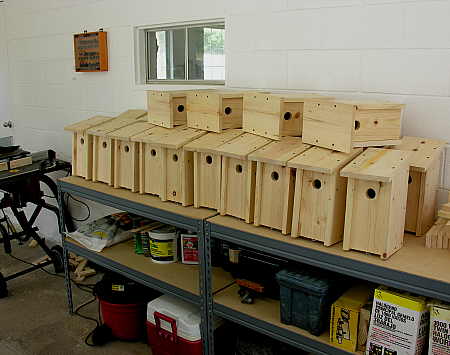
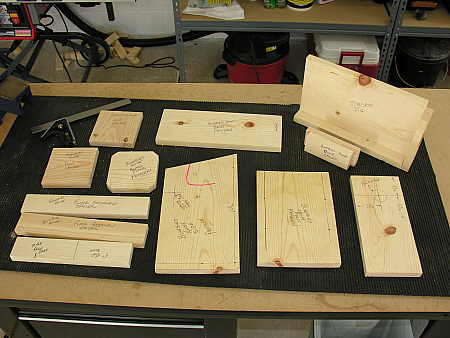
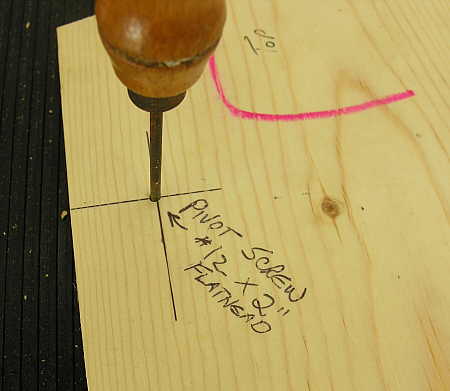
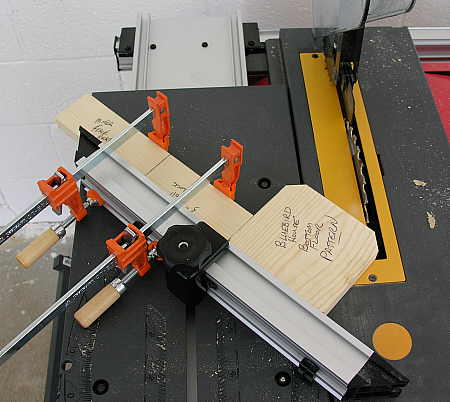
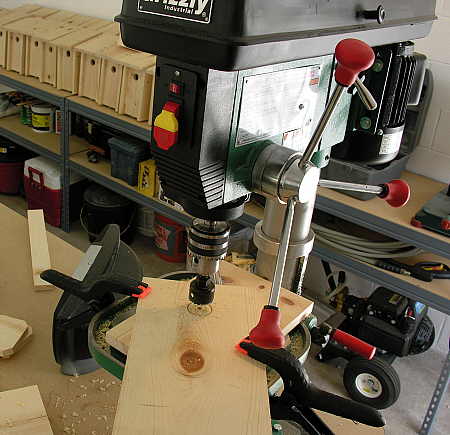
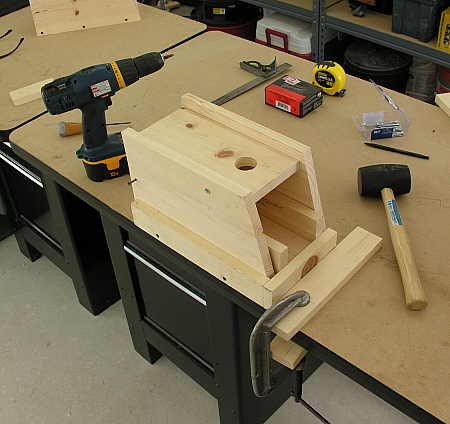
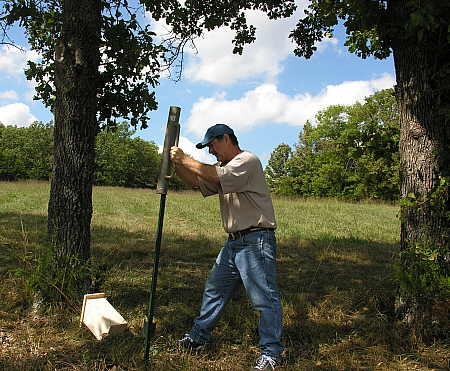
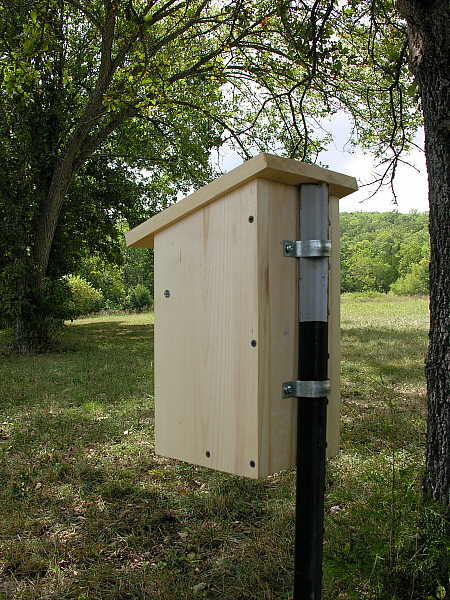
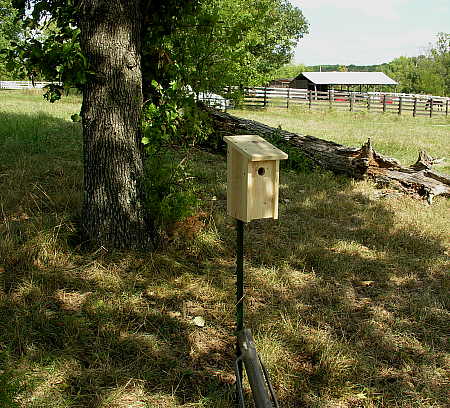


Beautiful!
Nice work Hal…
wow what a feat. have you considered a greased pole instead of the T-post? 1″ electrical conduit would still drive nicely with your fence post driver. i recall reading an article a while back when we were building a few birdhouses. just found you a similar article that says about the same stuff bluebirds-attractive-native-birds. what a quixotic endeavor. you get my vote for naturalist of the blogosphere award.
Question: do you have a problem with snakes? I like the project, but we’ve got black snakes, rattlers, and copperheads on our property – perhaps others I am not aware of and I am hesitant to provide future “food” for snakes. Any thoughts would be appreciated. fr n
Karl and Fr. Trevino – A good variety of snakes reside in this area. Because we are in a sparsely populated rural area with an abundant food supply for snakes, they are sighted fairly often.
Rather than try to foil predation by snakes, I am simply assuming that by erecting a large number of sanitary nesting boxes in suitable habitats, some percentage of them (I don’t know what that percentage may be) will end up being productive.
Pingback: Ranch Ramblins » Blog Archive » Adirondack Love Seat Project
Airholes are needed to cool the nestbox and should be placed on both sides near the back. Nice boxes. How do they open for cleaning.
Grady,
Ventilation, as well as opening for cleaning are discussed in a previous post (linked to in the first paragraph above), which can be read here:
http://www.mitzenmacher.net/blog/?p=997
Nice looking, functional birdhouses, should weather nicely. And what a good thing to do.
Great project, and a worthy cause. I don’t suppose you have plans for this item lying around, that I could pass on to my spouse? I will send him a link and he can make it out, but plans would improve the likelihood of completion. 😉